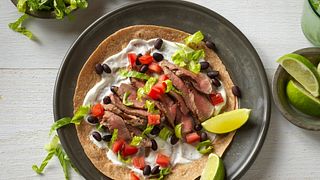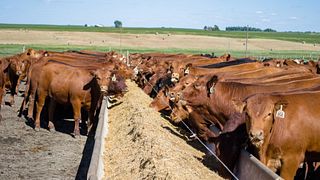New tools available to answer consumer questions about beef production
Hillary makens| may 08, 2017
Ever wonder what the difference is between grass-fed and organic beef? Confused by terms like “antibiotic-free” and “raised without antibiotics”? New tools are now available to help consumers answer these and many other questions about today’s beef production.
“Today’s consumer demands transparency and more information about how their food, including beef, is raised and grown,” Mandy Carr, Ph.D., senior executive director of Science & Product Solutions for the National Cattlemen’s Beef Association, a contractor to the Beef Checkoff. “Cattle farmers and ranchers are committed to providing answers to their questions.”
Consumer research conducted by the National Cattlemen’s Beef Association and funded by the beef checkoff indicates that consumers are confused about terms commonly found on labels such as “grass-fed” and “organic.” Additionally, some consumers have questions about the use of antibiotics in cattle production. Two new factsheets walk consumers through how cattle farmers and ranchers use antibiotics in accordance with Food and Drug Administration guidelines and the choices consumers have when buying beef in their local supermarket.
Decoding the Label: know your choices of beef
Antibiotics in Use
Antibiotic use in livestock is a hot topic with consumers. It is also top of mind for the beef producers who want consumers to know that we care about the issue and what we are doing to address it. The Antibiotic Use in Cattle fact sheet addresses consumer questions about how and why antibiotics are used and what the Beef Quality Assurance program is doing to educate producers about best practices. This tool helps consumers feel confident knowing that antibiotics are only given to cattle to treat, control or prevent disease.
Research shows that 88 percent of the millennial parents polled approved of the new Antibiotics Use in Cattle fact sheet saying that it was meaningful and it made them feel better about how beef is raised.
About the Beef Checkoff
The Beef Checkoff Program was established as part of the 1985 Farm Bill. The checkoff assesses $1 per head on the sale of live domestic and imported cattle, in addition to a comparable assessment on imported beef and beef products. States may retain up to 50 cents on the dollar and forward the other 50 cents per head to the Cattlemen's Beef Promotion and Research Board, which administers the national checkoff program, subject to USDA approval.
About NCBA, a Contractor to the Beef Checkoff
The National Cattlemen’s Beef Association (NCBA) is a contractor to the Beef Checkoff Program. The Beef Checkoff Program is administered by the Cattlemen’s Beef Board, with oversight provided by the U.S. Department of Agriculture.






